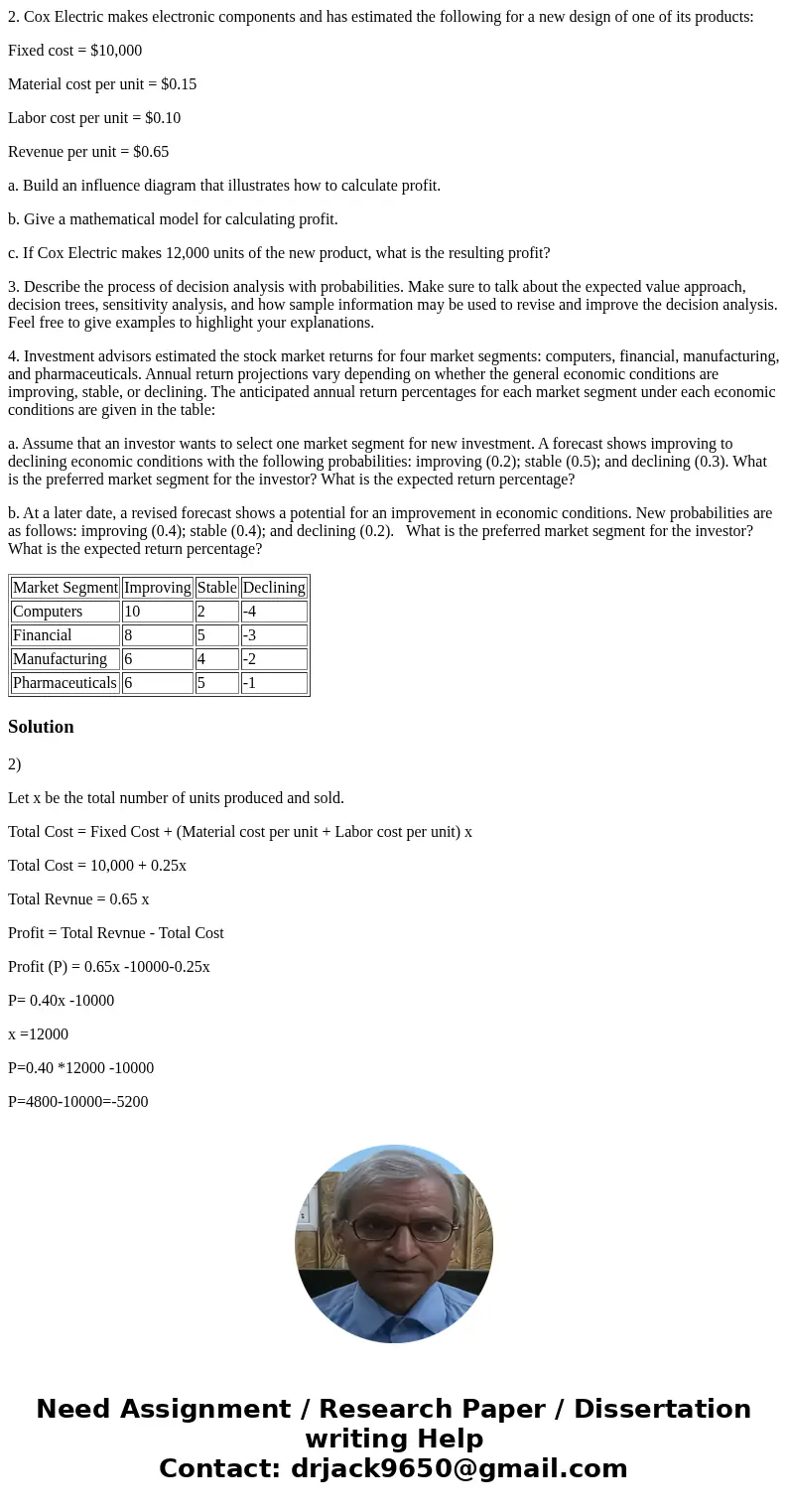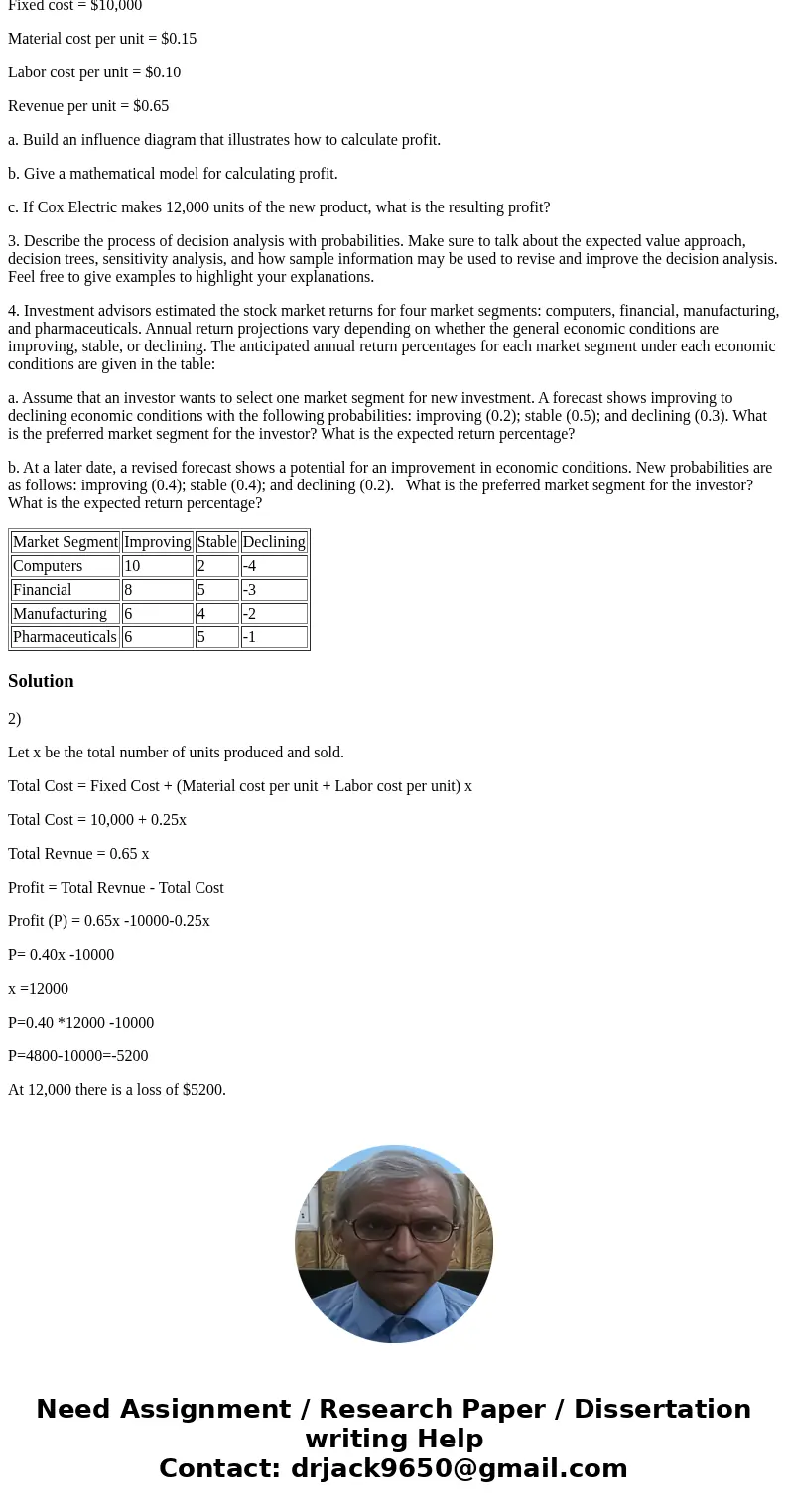2 Cox Electric makes electronic components and has estimated
2. Cox Electric makes electronic components and has estimated the following for a new design of one of its products:
Fixed cost = $10,000
Material cost per unit = $0.15
Labor cost per unit = $0.10
Revenue per unit = $0.65
a. Build an influence diagram that illustrates how to calculate profit.
b. Give a mathematical model for calculating profit.
c. If Cox Electric makes 12,000 units of the new product, what is the resulting profit?
3. Describe the process of decision analysis with probabilities. Make sure to talk about the expected value approach, decision trees, sensitivity analysis, and how sample information may be used to revise and improve the decision analysis. Feel free to give examples to highlight your explanations.
4. Investment advisors estimated the stock market returns for four market segments: computers, financial, manufacturing, and pharmaceuticals. Annual return projections vary depending on whether the general economic conditions are improving, stable, or declining. The anticipated annual return percentages for each market segment under each economic conditions are given in the table:
a. Assume that an investor wants to select one market segment for new investment. A forecast shows improving to declining economic conditions with the following probabilities: improving (0.2); stable (0.5); and declining (0.3). What is the preferred market segment for the investor? What is the expected return percentage?
b. At a later date, a revised forecast shows a potential for an improvement in economic conditions. New probabilities are as follows: improving (0.4); stable (0.4); and declining (0.2). What is the preferred market segment for the investor? What is the expected return percentage?
| Market Segment | Improving | Stable | Declining |
| Computers | 10 | 2 | -4 |
| Financial | 8 | 5 | -3 |
| Manufacturing | 6 | 4 | -2 |
| Pharmaceuticals | 6 | 5 | -1 |
Solution
2)
Let x be the total number of units produced and sold.
Total Cost = Fixed Cost + (Material cost per unit + Labor cost per unit) x
Total Cost = 10,000 + 0.25x
Total Revnue = 0.65 x
Profit = Total Revnue - Total Cost
Profit (P) = 0.65x -10000-0.25x
P= 0.40x -10000
x =12000
P=0.40 *12000 -10000
P=4800-10000=-5200
At 12,000 there is a loss of $5200.


 Homework Sourse
Homework Sourse